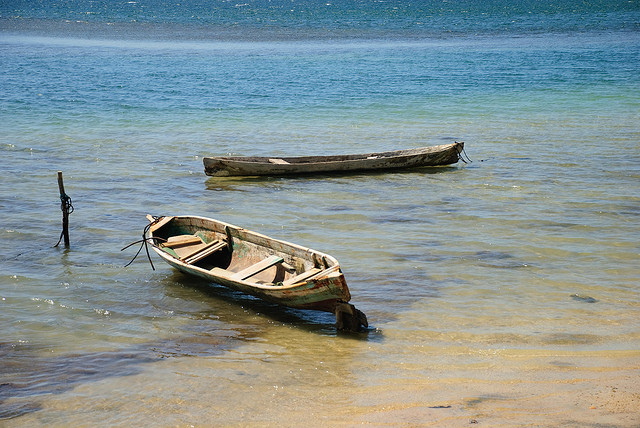Punta Gorda: The Oldest Permanent Settlement in Roatan

The oldest permanent settlement in Roatan, Punta Gorda (“Fat Point”) was founded shortly after April 12, 1797, when some 3,000 Garífuna deportees from the Caribbean island of San Vicente were stranded on Roatan by the British. After settling in Punta Gorda, many Garífuna continued on, migrating to Trujillo and from there up and down the Caribbean coasts of Honduras, Nicaragua, Guatemala, and Belize, but their first Honduran home remained. The anniversary marking their arrival is cause for great celebration in Punta Gorda. Garífuna from all over the coast attend the event. For most of the year, though, Punta Gorda is simply a sleepy seaside town—cayucos pulled up on the beach, a steady breeze blowing in the palms, and Garífuna residents moving at a very deliberate pace, usually happy to spend a few minutes or hours chatting with a visitor. The only visible evidence of the town’s history is a modest statue of Satuyé, the revered Garífuna warrior on San Vicente, located at the entrance to town from the highway.
The beaches in town are not very clean, but not far up the coast you’ll find fine patches of open sand, like Camp Bay Beach to the east. Local boat owners will take you there for a negotiable fee. There’s snorkeling and diving on the reef near Punta Gorda, but it’s for strong swimmers only. Watch out for boat traffic if you swim across the bay to the reef, and remember that the north side of Roatan is choppier than the south and west.

Practicalities
On the main road looping through town (both ends connect to the highway) are a few pulperías and comedores, a pool hall, and a couple of very basic hotels. It’s hard to imagine a reason why anyone would stay here over another place with better beaches and services, but if fate brings you here, the best rooms in town are at North Side Garden (tel. 504/2435-1848, US$16 s/d, cold water only), in a reasonably attractive two-story wooden house with five tidy rooms, each with newly tiled floors, a TV, fan, and one double bed.
For a meal, try Restaurante Perla, located near the western entrance to Punta Gorda. (The western entrance is marked on the highway by one of the blue-and-white bus stops, and a few old restaurant signs. If you miss it, the eastern entrance is marked by a “Punta Gorda” sign.)
Toward the eastern end of town is Dayia Internet Café (8 a.m.–9 p.m. Mon.–Sat., sometimes open Sun.), charging US$2 an hour for Internet.
Although not as frequently patronized as the Oak Ridge boaters, locals will gladly help arrange a boat tour of the mangrove tunnels and waterways—teeming with wildlife—costing maybe US$15–20 for an hour’s trip, depending on negotiating skills and fuel prices. Back up at the highway is Satuyé Park, which, on days that cruise ships are in, has a handful of handicraft and souvenir vendors.
Excerpted from the Sixth Edition of Moon Honduras.
Newsletter Signup
By clicking ‘Sign Up,’ I acknowledge that I have read and agree to Hachette Book Group’s Privacy Policy and Terms of Use
Pin for Later


